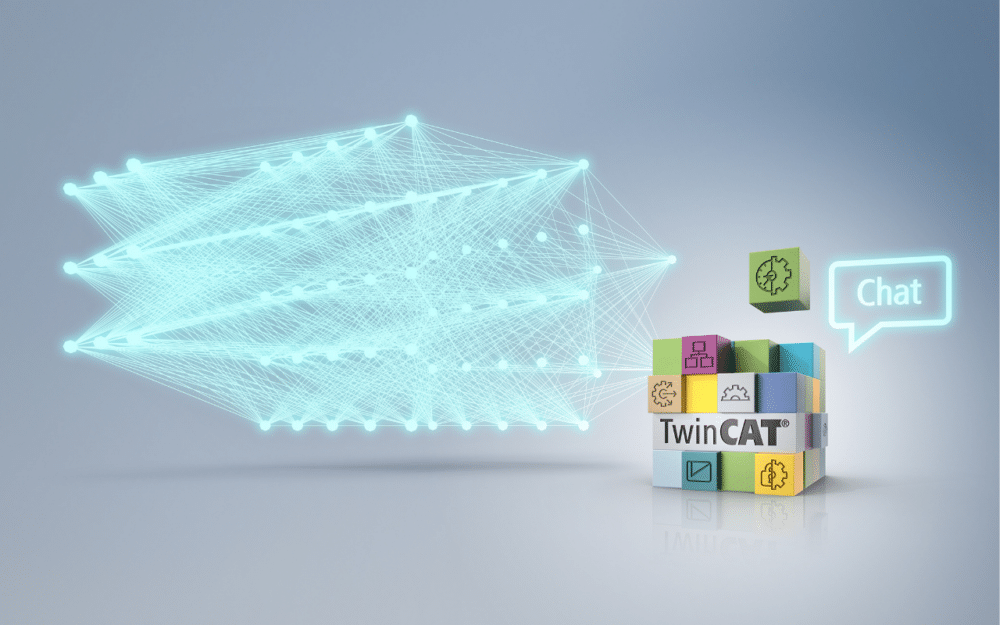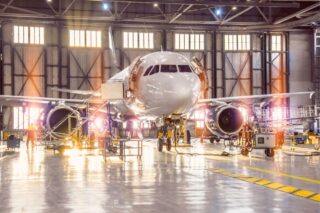The integration of artificial intelligence has emerged as a transformative force. It is currently reshaping traditional processes and revolutionizing manufacturing paradigms. From enhancing productivity to fostering sustainability, AI holds immense potential to drive innovation and efficiency across various sectors. We attended Hannover Messe Press Preview last month. Fabian Bause, Product Manager at Beckhoff gave us his insights regarding the multifaceted ways in which AI is revolutionizing the manufacturing industry, exploring real-world applications, and envisioning future trends.
In recent years, the concept of artificial intelligence has transcended mere buzzwords, permeating every facet of industrial operations. At Hannover Messe Press Preview last month, Fabian Bause, Product Manager at automation technology company Beckhoff, underscored the significance of understanding AI not as an isolated entity but as a versatile tool for process automation.
“What you have to understand is what artificial intelligence actually is. It is just a method to achieve something, to automate something and processes as well. It is not something that stands on its own, but it is a tool that we can use to automate processes, software and even physical machines.”
With Beckhoff’s expertise spanning diverse applications, from wind turbines to stage technology, the integration of AI has become integral to optimizing control systems and streamlining operations.
Artificial Intelligence Automation
At the heart of the manufacturing renaissance lies the intersection of automation and sustainability. Bause emphasizes the pivotal role of automation in navigating economic complexities while preserving finite resources.
“Automation serves as the linchpin for maintaining equilibrium amidst the economic challenges posed by a growing population aspiring for increased prosperity, which, in turn, intensifies demands for resources. With finite raw materials and energy sources at our disposal, the imperative becomes clear: we must optimize resource utilization and enhance production efficiency to meet escalating demands while preserving quality. Effectively, this entails streamlining our production processes. Careless resource management and excessive waste production only exacerbate the predicament. Hence, the perpetual dilemma revolves around striking a balance between profitability and resource conservation.”
By leveraging AI-driven optimization, manufacturers can uphold quality standards, mitigate waste, and foster a harmonious equilibrium between profitability and resource conservation.
What Makes AI So Special?
Bause highlighted the fact that in previous editions of Hannover Messe, AI was vividly showcased as a means to optimize processes. Bause reflects on Beckhoff’s contributions, exemplified by the XPlanar System, a revolutionary transport mechanism propelled by AI-optimized neural networks.
He also illustrates AI’s role in the food industry. For example, Beckhoff completed a project in China, involving the packaging of noodles. The challenge was staggering: about 300 packages per minute were falling off the belt, a pace impossible to manage with manual labor alone. Even if ten people were deployed, achieving a 100% success rate would remain unattainable. Besides, human fatigue inevitably leads to errors over time. However, leveraging software proved to be the solution.
“Employing Key Performance Indicators (KPIs), we trained the software to recognize the parameters of an ideal packaging, establishing a benchmark for quality control. Once trained, the software was able to identify faulty packaging in real time. This enabled us to pinpoint issues directly within the production process, utilizing machine data to trace back to the precise moment of error occurrence.”
Unlike conventional approaches, where defects may only be detected after reaching the customer, this immediate feedback loop empowered them to optimize processes proactively.
“We, as automation experts, initially focused on the factory floor, observing the machines as our primary concern. We sought to develop solutions for enhancing factory operations by integrating automation and artificial intelligence. Our initiatives involved introducing new machinery and tools into the factory environment, thereby impacting the work of blue-collar workers.”
Those examples showed how AI-driven solutions promise enhanced quality control and resource utilization, and pave the way for a more resilient and responsive manufacturing ecosystem.
The Paradigm Shift With Generative AI: Empowering Workforce Through AI Integration
But today, AI is changing things as never before and it is impacting people in the office too, namely white-collar workers.
“Suddenly, generative AI, like ChatGPT, emerged. Everyone began experimenting with it, and at the Hannover Messe, we presented our findings. What did we showcase there? Essentially, we took GPT and customized it, devising our own methodologies tailored to automation technology. The pivotal moment is that we’re no longer confined to the factory floor. Generative AI has the capability to profoundly influence white-collar workers in office settings, who may have initially felt insulated from changes occurring on the factory floor. With new methodologies continually evolving, adaptability becomes paramount for both the technology and us.”
As AI permeates manufacturing landscapes, its transformative impact extends to the workforce, heralding a paradigm shift in job roles and responsibilities. Bause envisions a future where AI serves as a collaborative ally, augmenting human ingenuity and efficiency.
“If you are able to enter texts into a computer, you can work with AI. It has never been like this before. If you wanted to work with AI you would have to be an expert in a certain way to deal with it. This is no longer the case. This alone is proof that now everyone is capable of dealing with generative AI because it has the most natural interface and that is the game changer. That natural interface is language, and it doesn’t matter which language whether it’s Norwegian, German, English or Chinese.”
Because everyone can use it, Bause predicts it will demand a change in our way of working.
“Studies from Harvard prove that when we, as humans, use generative AI we are much more productive and of higher quality. AI is a method to automate things. What can we automate? Simple repetitive and manual tasks.”
TwinCAT Chat
For Bause, the versatility of AI is truly remarkable, especially when considering its ability to adapt to specialized tasks and contexts.
One of the key advantages lies in the flexibility to utilize basic slack models as foundational frameworks, enhancing them through specialized Large Language Models (LLMs) tailored to specific needs. This approach empowers users to fine-tune models, incorporate additional context, and even personalize responses to suit individual requirements.
The company developed TwinCAT Chat, a tool designed to integrate LLMs into control engineering seamlessly. This integration offers clear advantages over traditional methods such as using ChatGPT in a web browser. TwinCAT Chat simplifies the development process by seamlessly integrating communication and code exchange.
It also streamlines the initialization process for TwinCAT requests. Users can ask specific questions directly without prior setup. TwinCAT Chat also facilitates the easy transfer of generated code. This saves developers time and reduces manual errors. The tool also offers pre-tested, one-click requests to enhance user workflow efficiency. Ongoing development efforts include the automated creation of TwinCAT HMI controls and a chatbot interface for the Beckhoff documentation system.
“Imagine a scenario where navigating through extensive manuals for software or products becomes a thing of the past. With AI at the helm, accessing relevant information becomes as simple as engaging in a conversation. By leveraging generative AI models alongside existing documentation systems, users can effortlessly pose queries and receive tailored responses, eliminating the need for exhaustive manual searches.”
This level of automation not only enhances productivity but also bridges the gap between human creativity and machine execution.
Forecasting the AI-Driven Future of Manufacturing: No Need For AI Specialists
Looking ahead, Bause offers insights into the evolving trajectory of AI in manufacturing. Anticipating a proliferation of AI-enabled hardware and democratized tools, he envisions a future where AI becomes seamlessly integrated into every aspect of industrial operations.
“We will get to the point where we can very easily use AI tools for special tailored applications. And that an AI specialist is not needed to develop an AI.”
Beckhoff will be at Hannover Messe Hall 9, Stand F06











